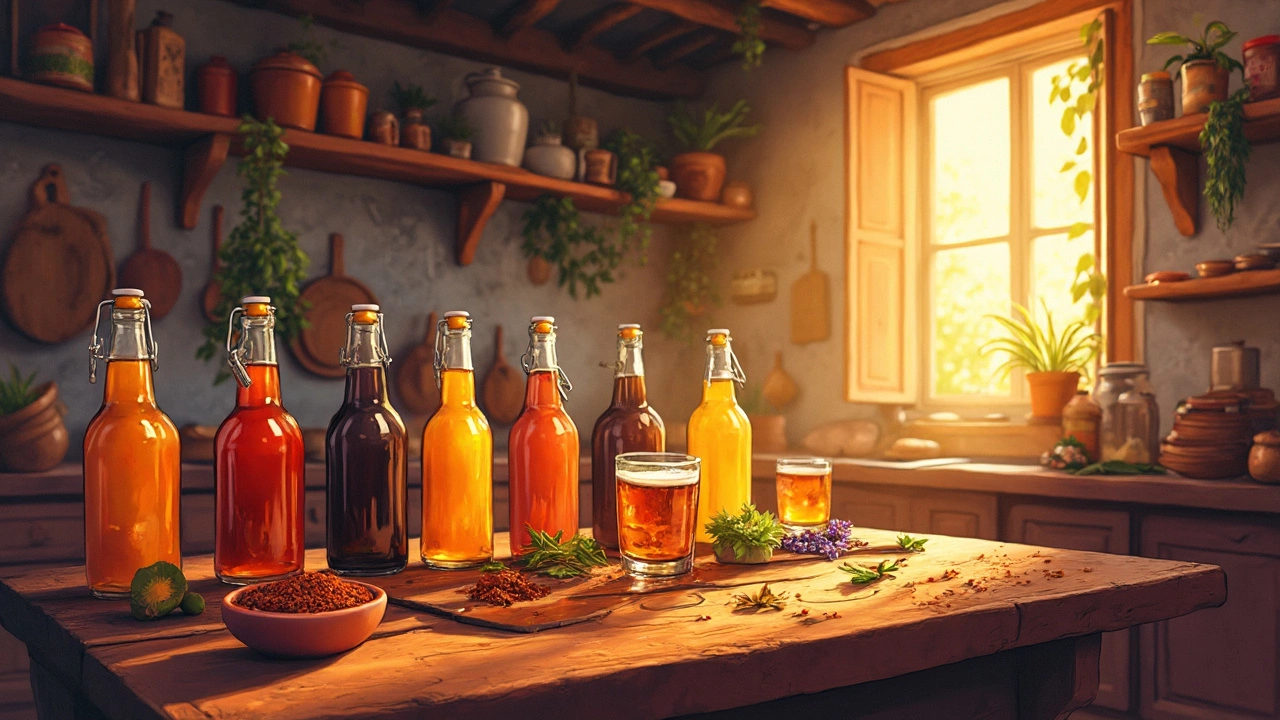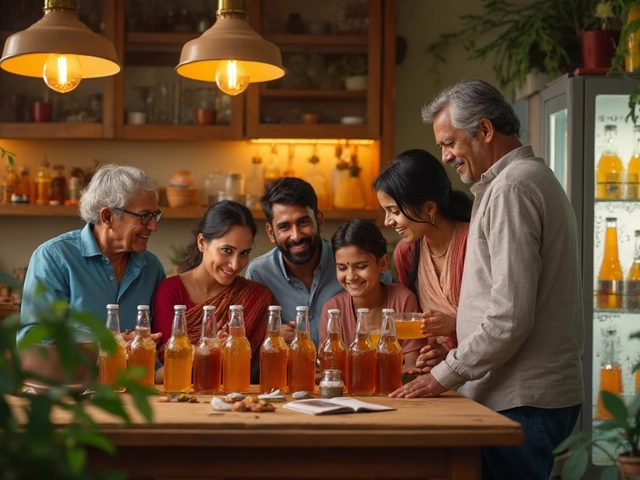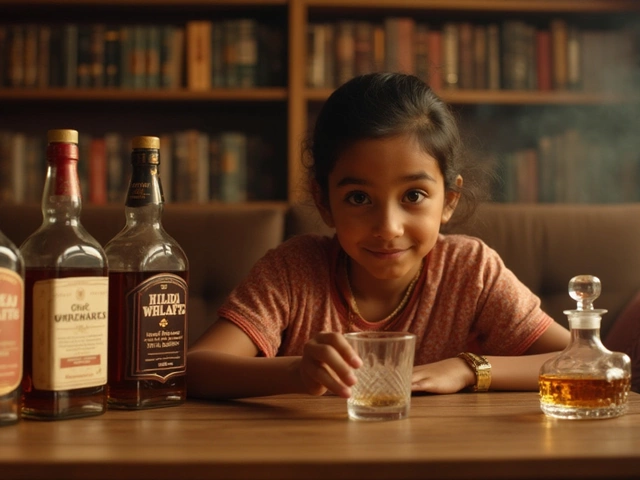
So, you've got your batch of homemade beer ready, and you're wondering how long it can sit before turning into something less drinkable. It's a good question because beer, much like any other homemade delight, has its prime window.
The first thing to know is that the shelf life of your beer depends on several factors, including the style of beer, how it's stored, and ingredients used. On average, you can expect homemade beer to stay good for about three to six months. But don't just mark the calendar and relax—how you store it can make a big difference.
Keep your beer in a cool, dark place; think of it like a vampire avoiding sunlight. Avoid fluctuations in temperature, as they can cause your beer to age prematurely. Bottled beers generally last longer than those in kegs, so if you're not planning to drink it all in one go, bottles might be your best friend.
- Understanding Beer Shelf Life
- Factors Affecting Freshness
- Storing Your Beer
- Signs Your Beer Has Gone Bad
Understanding Beer Shelf Life
If you've ever wondered why some beers taste just as good weeks later while others fall flat, you're in the right place. The shelf life of your homemade beer isn't a one-size-fits-all situation.
First off, the style of beer you're brewing plays a huge role. Lighter beers like pale ales don't keep as long as darker ones like stouts or porters. Why? It's all about the alcohol content and hops used, which are natural preservatives. Heavier, hoppier beers tend to last longer.
Now, let's chat about freshness. Most home brews maintain their optimal flavor for about three to six months, but this can vary. Did you know that some beer enthusiasts argue darker and more alcohol-laden beers can age like fine wine? It’s true! Certain Belgian ales and strong stouts might improve with age, but they do require the right conditions.
Why Beer Goes Bad
But what actually makes beer go bad? Exposure to light, heat, and oxygen are the big villains here. Ever heard of 'skunky' beer? That's what happens when light interacts with hop compounds. And trust me, it’s not great. Keeping your beer in dark bottles and out of sunlight helps avoid this unpleasant flavor.
The Role of Ingredients
Another fun fact: the freshness of your ingredients at the time of brewing can affect how long your beer will last. Using fresh hops and quality malt ensures your brew starts off on strong footing. Think of it as giving your beer a head start in its marathon of flavor preservation.
Lastly, proper hygiene during the brewing process can't be overstated. Contaminants can sneak in at any stage and shorten your brew's life. Make sure everything from bottles to fermenters is squeaky clean.
| Beer Style | Estimated Shelf Life |
|---|---|
| Lager | 4-6 months |
| IPA | 2-3 months |
| Stout | 6-12 months |
Knowing these basics helps you to not only enjoy your beer at its best but also to plan when and how to savor those precious bottles.
Factors Affecting Freshness
When it comes to keeping your homemade beer as fresh as possible, certain factors can really make or break the flavor over time. Understanding these will help you extend the life of your brew and make sure it tastes exactly how you planned.
Oxygen Exposure
Oxygen is like kryptonite to homemade beer. Once your beer is exposed to air, it starts oxidizing, which can lead to off-flavors that taste stale or like wet cardboard. To minimize this, make sure your bottles are sealed tight and any capping equipment is precise. If you're using kegs, ensure all seals are intact.
Temperature Control
The temperature where you store your homebrew plays a huge role in its freshness. Ideally, your beer should stay at a steady temperature, around 50-55°F (10-13°C), away from any heat sources. Sudden changes can speed up aging and spoil the taste.
Light Exposure
Just like a vampire, your beer doesn't do well with sunlight. Light exposure, especially UV rays, can skunk beer. That's not a good thing unless you like your lager tasting like a skunk. Always store beers in dark bottles or keep them in a dark place to protect them from unwanted light.
Ingredients and Recipe
The freshness of ingredients you use in your home brewing kits also impacts how long your beer will stay fresh. Fresh hops and grains typically lead to better-tasting, longer-lasting beer. Also, strong alcohol beers tend to last longer, thanks to the preservatives granted by higher alcohol content.
| Factor | Impact on Freshness |
|---|---|
| Oxygen | Leads to oxidation and off-flavors |
| Temperature | Higher or fluctuating temps accelerate aging |
| Light | UV exposure can skunk the beer |
| Ingredients | Fresh ingredients lead to better longevity |
Ensuring these elements are well-managed will give your homemade beer a better shot at tasting fresh longer. Remember, a lot of home brewing success lies in the details!

Storing Your Beer
Storing your homemade beer properly is just as important as brewing it. The key to maintaining that fresh, delicious taste is all in the details. Wanna make sure your homebrew stays as good as the day it was bottled? Here’s how to do it.
Temperature is Key
Temperature control can make or break your beer’s shelf life. Aim to keep it at a consistent 50-55°F (10-13°C). Avoid putting your beer in the kitchen or garage where temps can swing. Also, resist the urge to freeze your beer, thinking it’ll stay fresh forever—it won’t, and you might end up with exploded bottles.
Keep it Dark
Your brew is a bit like a vampire—sunlight is its worst enemy. UV rays can cause “lightstruck” flavors, often described as ‘skunky’. Store your bottles in a dark area or use brown glass bottles, which offer better protection against light than clear or green ones.
Upright Position
Always store beer bottles upright. This way, the beer touches less of the cap, minimizing oxidation and contamination risk and keeping the carbonation intact.
Quick Tip: Label Everything
It might sound trivial, but label your beer with a brewed-on date. This keeps track of your beer’s aging process. Plus, it’s a neat way to show off your homebrewing journey.
Bonus: How Long Each Beer Type Lasts
| Beer Type | Shelf Life (Months) |
|---|---|
| IPA | 3-4 |
| Stouts/Porters | 6-9 |
| Sour Ales | 12+ |
Remember, different types of beer age differently. For example, your favorite IPA is best enjoyed fresh, while a stout might taste even better after six months. Understanding these differences can help you plan your brewing and storing schedule to perfection.
Signs Your Beer Has Gone Bad
Home brewing is a fun hobby, but nothing spoils the fun like a bad batch of homemade beer. Recognizing the warning signs can save your taste buds and ensure you enjoy your creations in all their glory.
Strange Smells
If your homebrew smells off, trust your nose—it's a good indicator something is wrong. A sour or vinegar-like aroma often signals unwanted bacterial activity. Similarly, a wet cardboard or musty smell could mean oxidation has occurred, leading to stale beer.
Odd Tastes
Taking a sip and tasting something unpleasant? Beers past their prime often taste sour, metallic, or overly bitter. Sometimes, they might just seem flat or lack the vibrant taste you originally loved.
Appearance Matters
Cloudiness isn't always bad, especially with certain styles, but unexpected changes in clarity, or the presence of floaty bits, could mean spoilage. Additionally, foam that dissipates quickly might be a sign of aging or contamination.
Unexpected Carbonation
Your beer exploding upon opening is a dramatic sign it's not safe to drink! Over-carbonation can occur if fermentation wasn't complete before bottling. If it's unusually fizzy or gushes out like a shook soda, that's a red flag.
Monitoring these signs ensures you make the most of your home brewing efforts. Enjoy your beer with confidence, knowing you can detect when it’s past its prime!





Categories